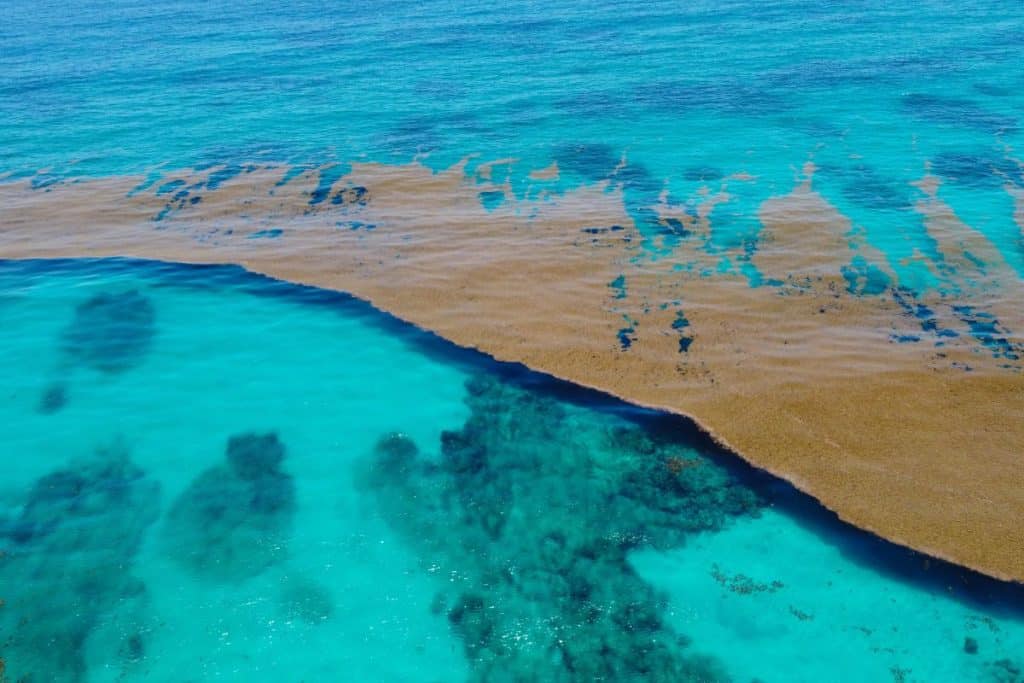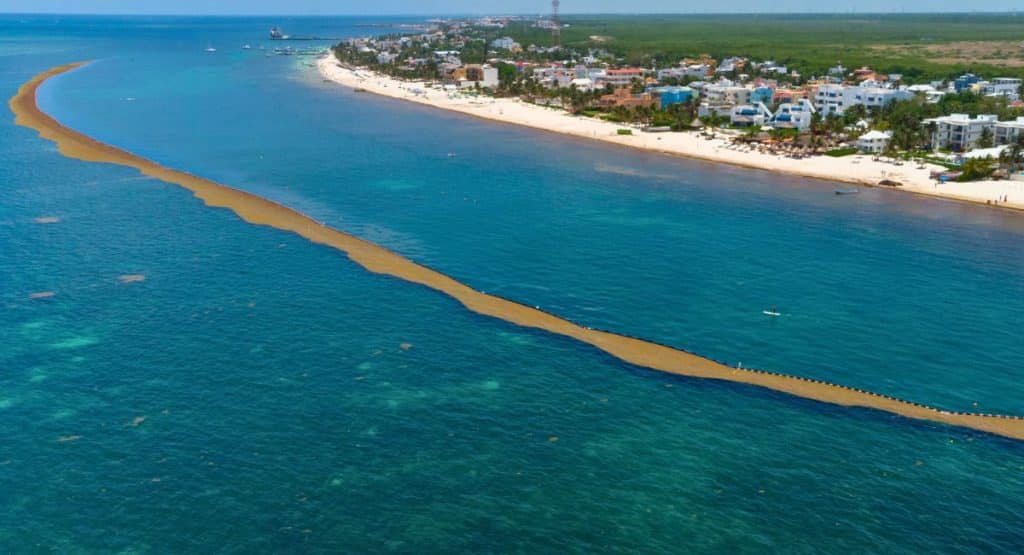Sargassum has been around for centuries. The first report of its existence was written by Christopher Columbus himself in 1492, concerned that his caravels could become trapped in a “vegetal blob,” in what is known today as the Sargasso Sea.
For all these years, this harmless algae used to provide shelter and food for marine species. But not anymore.
Over the last decade, this seaweed has been growing uncontrollably, massively arriving at coasts all the way from West Africa up to South Florida, passing from all countries surrounded by Caribbean waters, including Mexico.
In Quintana Roo alone, authorities have collected over 200 tons of sargassum in the last 4 years, according to Huguette Hernández Gómez, Secretary of Ecology and Environment of the State. In other words, a total nightmare.
According to experts, sargassum is posing a marine risk never seen before. The worst part is that they don’t really know what exactly is causing this phenomenon or how to mitigate it.
Among other things, sargassum forms a barrier that blocks sunlight preventing marine organisms from carrying out photosynthesis.
In a 2021 study published by Climate Change Ecology, sargassum beds were found guilty of decreasing sunlight entry by 73% and increasing water temperature by 41°F.
Sargassum “mainly affects species that cannot move or move very little, such as starfish, sea urchins, seagrasses and, of course, corals,” reported the biologist María García Rivas, Director of Puerto Morelos National Reef Park.
Another study published by Marine Pollution Bulletin analyzed the damage caused by the rotting of the algae on Mexican Caribbean beaches in 2018, in which creatures from 78 species died, especially crustaceans and demersal and neritic fish that live on the seabed.
Still, the worst impacted species is the Great Mayan Reef, the second largest in the world, comprising Mexico, Belize, Guatemala, and Honduras, because it’s being “suffocated” by massive amounts of sargassum.
In Colombia, the mountains of sargassum accumulated in key protected islands are preventing sea tortures from reaching the sea before being depredated.
“We observed that baby turtles had problems crossing the sargassum barrier and were vulnerable to predation by ghost crabs, rats and other predators,” informed Briggite Gavio, a marine biology professor at the National University of Colombia.
Academic pairs in Antigua and Barbuda and Florida have reported the same issue.
In countries like Belize, sargassum is sweeping along marine litter, suffocating multiple organisms and making the environment toxic in the process, says James Foley, oceans director at Nature Conservancy.
Last but not least, Sargassum also appears to be killing Caribbean mangroves, which are saltwater trees that defend coastlines from extreme hurricanes.
These organisms live in the seashore but their roots need oxygen to survive. The problem is that sargassum is acting as an oil spill, suffocating its roots, says Camilo Trench, a Jamaican marine biologist at the University of the West Indies (UWI).
Costs for the Tourism Industry and Governments
Being Mexico one of the most visited countries in the world, it’s also the one paying the highest price. Tourism reduces but expenses skyrocket.
In 2023, Mexico’s Navy Secretariat spent $3 million collecting seaweed, purchasing sargasero ships and installing anti-sargassum barriers.
The Federal Maritime Terrestrial Zone spent $7 million doing the same and Quintana Roo’s government spent $1.7 million to combat sargassum.
For their part, resort managers have spent thousands of dollars hiring cleaning personnel to keep beaches acceptable for beachgoers.
In 2024, spending is expected to be similar.
Seaweed video report from Playacar, Mexico:




